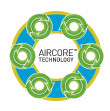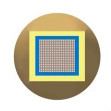ANALOGUE
With a vast array of technologies and our 40+ years in the specialist cable market, we produce cables to suit every budget to maximise the potential of your beloved system. With a vast array of technologies and our 40+ years in the specialist cable market, we produce cables to suit every budget to maximise the potential of your beloved system.
DIGITAL
Whether you’re connecting your TV to a sound bar or music server to a DAC, QED has a digital cable to meet your requirements. Our cables are tried and tested to ensure you get the best performance from your digital sources.
PHONO TO PHONO
When connecting your analogue sources such as your CD player or turntable to your amplifier, here at QED, we have a cable to suit your system. From our entry level Profile cable through to our flagship Signature Interconnect.
XLR
Using our unique Tri-Conductor technology and Neutrik XX-14 balanced plugs, our XLR cables offer the cleanest possible sound from a specialist XLR cable, whilst also incorporating our Ferrite insulation to eliminate timing errors.
DIGITAL COAXIAL
An alternative to optical, our premium digital coaxial cables use a specially designed cable cordage and unique plug design to achieve the precise signal characteristics required for high resolution and multi-channel audio.
USB A-B
With our high end USB A-B we isolate the power and data conductors preventing any potential cross talk, therefore meaning less jitter and an enhanced audio performance.
USB A-B MICRO
For use with Laptops/Computers and portable headphone amps/dacs, the QED reference USB A-Micro B uses our Ferrite insulation to reduce Jitter, as well as isolating the data and power lanes for a cleaner overall signal.
USB A-MINI B
Triple magnet screening and 24K gold plugs makes our Performance USB A-Mini B the best in its class.
JACK TO PHONO
Connecting your mobile device/tablet to your audio system has never been easier with our 2 step 3.5mm jack for a simpler connection.
HDMI
Using our in house HDMI testing facility, QED have designed premium HDMI cables to suit any budget. From our flexible and slimline profile to our exceptional Reference HDMI with its BandPass filter technology to reduce Jitter to Ultra low levels
OPTICAL
For all of your Optical needs, QED has an optical cable for you. For the more advanced, high bandwidth signals, Reference Optical Quartz uses glass technology to accurately send the information from source to receiver.
ETHERNET
The most common type of cable used for connecting products on a wired network. This cable connects wired devices together to the local network for file sharing and Internet access.
SUBWOOFER CABLE
Using technologies from our analogue cables such as complimentary conductor technology, your subwoofer will always perform to its best capability.
QED Technologies Technical Bulletin

99.999% Oxygen Free Copper
Speaker cables have to carry a lot of current. If the electrical resistance of the cable is too large, part of the music signal will be lost, causing a detrimental effect on the fidelity of the sound you hear. To stop this from happening we make the resistance of our speaker cables as small as possible. We do this by using the largest practical cross- sectional area of copper within the size constraints of each cable. In order to squeeze the last drop of performance from the conductors we make sure that there are no impurities in the copper which would defeat the object of making them so large. That's why we use 99.999% oxygen free copper exclusively.

Silver Plated 99.999% Oxygen Free Copper
Speaker cables must exhibit the lowest possible resistance to the flow of electrical current. The larger the cross- sectional area of the conductors the smaller the resistance will be. However the cable must be small enough to be practical for its intended use. Although copper is a very good electrical conductor, silver is even better. By using it in our top of the range cables we can improve conductance without making the cable larger. As the pitch of the sound increases the current flows more and more to the outside of the conductors so we cunningly use silver plated 99.999% oxygen free copper conductors to reduce resistance only where it is needed, thus saving you money.

Low Loss Dielectric
Music signals in a loudspeaker cable move back and forth many times every second. The insulating material used to separate the send and return conductors from each other (the dielectric) has to be charged and discharged every time. Not all of the energy stored in the dielectric during each charge cycle is completely returned during each discharge cycle which has a detrimental effect on the fidelity of the sound you hear. That's why at QED we use low loss dielectric materials such as Polyethylene (PE) or Teflon(TM) (PTFE) in preference to cheaper PVC alternatives found in inferior unbranded cables.

X-Tube Technology
In loudspeaker cables high pitched sounds are forced to travel towards the outside of the conductor and so are able to use less and less of the available cross-sectional area as the pitch increases. This is called the "Skin Effect". It means that for high frequencies the resistance of the cable appears to be much higher than it does for lower pitched sounds. This has a detrimental effect on the fidelity of the sound you hear. QED X-Tube Technology solves this problem by creating a hollow tubular conductor geometry through which each frequency can pass with equal ease when compared to traditional solid or stranded conductors.

Air Core Technology
In loudspeaker cables electrical current does not flow smoothly because - rather like in a river - small eddy currents are formed. Eddy currents in one conductor can affect the current flowing in an adjacent conductor so that currents flowing in the same direction move away from each other. This "Proximity Effect" increases resistance as frequency increases which has a detrimental effect on the fidelity of the sound you hear. QED Aircore Technology builds on the science of X-Tube Technology and eliminates this problem by using individually insulated twisted strands arranged around a hollow core to solve both the proximity and skin effects.

Airloc Technology
If a bare wire termination method is used the exposed copper quickly oxidizes increasing the resistance of the cable, which has a detrimental effect on the fidelity of the sound you hear. Available as an option, QED Airloc plugs eliminate this problem by preventing oxidization and providing a gold plated mating surface which remains low resistance for ever.